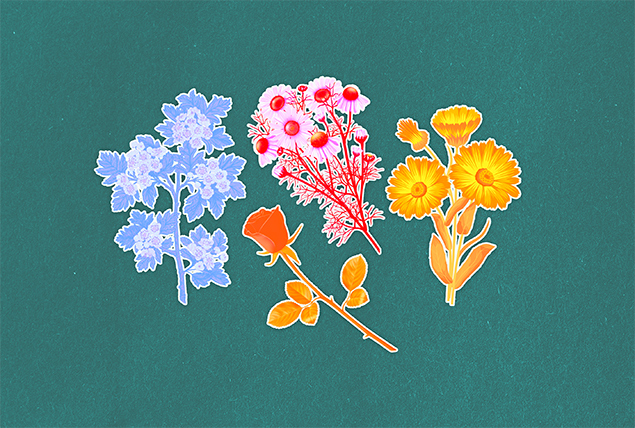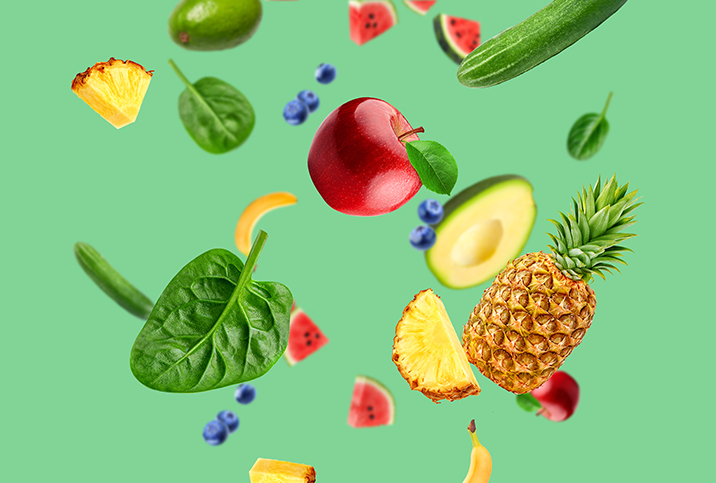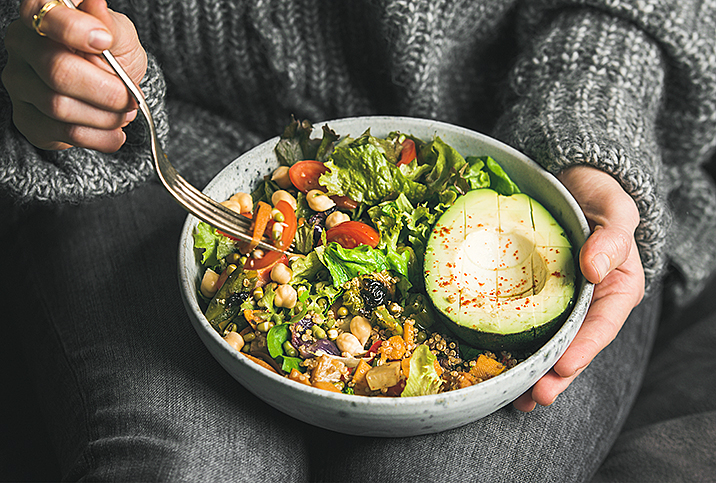Can Flowers Help Improve Your Sexual Health?

From the plucky hibiscus to the sultry squash blossom, flowers have been used as decorations, food and medicine for hundreds of years. The health benefits of flowers are not fully understood, but a growing number of nutritionists and researchers are trying to change that.
That includes researchers such as Karolina P. Jakubczyk, Ph.D., who studies the nutritional perks of plants at the Pomeranian Medical University in Szczecin, Poland.
"Flowers are a source of vitamins, essential oils and antioxidants, especially when consumed fresh or minimally processed," Jakubczyk said. "The use of edible flowers appears to be beneficial in the prevention and supportive treatment of chronic diseases, including diabetes, cardiovascular diseases, as well as various types of cancer."
In addition to disease prevention, certain flowers have been linked to desirable effects for sexual health, said Erin Bunting, co-author of "The Edible Flower: A Modern Guide to Growing, Cooking and Eating Edible Flowers" and co-founder of The Edible Flower, an Ireland-based supper club. The potential health benefits of flowers in and out of the bedroom are numerous, ranging from improved mood to reduced menstrual pain.
Bunting notes that while some research has connected flowers to certain benefits, you should always ask your medical health provider before you start using any treatment or supplement—even a natural one.
With that in mind, here are six edible flowers with potential sexual health benefits and how to incorporate them into your lifestyle:
Calendula
Calendula—known as pot marigold—is a flowering herb in the daisy family native to Southern Europe and the Eastern Mediterranean. The flower's bright petals have been used for culinary and medicinal purposes since at least the 12th century.
What are the benefits of calendula?
Traditionally, calendula has been recommended to relieve menstrual pain, but a systematic review published in February 2006 indicated insufficient evidence for its effects on menstrual abnormalities or pain.
Bunting said that calendula is thought to be "amazing" for cleansing the lymphatic system, a network of delicate tubes and lymph nodes that run throughout the body. The lymphatic system is an essential component of the female reproductive system, draining the fluid from the uterus to maintain the balance of ovarian fluids.
There are hundreds of products on the market that make the claim that calendula can cleanse the lymphatic system but there is little research evidence to support this conclusion.
Jakubczyk, who conducted a study into the health and athletic benefits of edible flowers, noted that calendula is full of fiber. A high-fiber diet is associated with healthy estrogen levels, and increased fiber intake has been linked to increased semen production.
"One tablespoon of freeze-dried calendula petals contains 7.44 grams of fiber, that is, 30 percent of an adult's recommended daily allowance," Jakubczyk said.
How to use calendula
"If you've got painful periods and cramps, calendula is a good one to put into a tea," Bunting said.
To prepare calendula tea, place dried or fresh blossoms into a mug and pour in boiling water. Let it steep for a minute or two and drink.
Alternatively, you can use fresh, dry or cooked calendula petals as a salad topping or add them to soups and sauces to add a mild, peppery flavor.
Hawthorn
Hawthorne—known as whitethorn—is a small, bushy tree that blossoms with edible white flowers and berries. It's a traditionally sacred plant in Celtic mythology, believed to be a gateway to the fairy world, Bunting said.
What are the benefits of hawthorn?
Since the first century, hawthorn has been used in Europe and China to treat heart problems. Since then, multiple studies have confirmed hawthorn may be beneficial for treating mild to moderate heart failure.
Hawthorn is known for being good for anxiety and stress, Bunting said. Anxiety can increase the cortisol level in the body, which in turn can negatively impact desire.
How to use hawthorn flower
"You can use the flowers during the blossom, which is in May," Bunting said. "But you can also use the leaves and the berries, which come later in the year."
Infuse hawthorn flowers into syrups and cordials, and simmer the berries into jams and sauces.
Mondia whitei
Mondia whitei—known as the African ginger or simply mondia—is a traditional medicinal plant with reddish-purple flowers.
What are the health benefits of mondia whitei?
The plant has been used in Africa for centuries as an aphrodisiac, as well as a natural remedy for improved libido and fertility. Modern research suggests the traditional herb is safe to consume and has aphrodisiac properties.
How to use mondia whitei
Traditionally, the dried leaves of the plant have been powdered and mixed with food. Mondia whitei supplements can be purchased in capsule and powder form online.
Chamomile
Chamomile—including German Chamomile and Roman Chamomile—is one of the oldest and most popular medical flowers.
What are the health benefits of chamomile?
Chamomile has been used for thousands of years to treat a range of conditions—most notably for calming frayed nerves and promoting sleep, Bunting noted.
Chamomile contains apigenin, an antioxidant that binds to benzodiazepine receptors in the brain, promoting sleepiness. Sleep functions as a biological replenisher for hormones, which play an important role in arousal, sex drive and erectile function.
How to use chamomile
"A lot of people feel like you should only take chamomile before bed, but I find it's a great herb to take any time of the day if you're feeling a little bit wound up," Bunting said.
The most common form of chamomile is tea, which you can make from store-bought tea bags or dried or fresh petals. You can toss chamomile petals into salads or infuse them into butter, milk and honey.
Echinacea
Echinacea flower—also known as purple coneflower—was used by North American indigenous tribes to treat a range of ailments, including throat infections and pain.
What are the benefits of echinacea?
Research suggests echinacea contains properties that improve immune function, reduce inflammation and have hormonal balancing effects.
How to use the Echinacea flower
Dried Echinacea flower petals can be brewed into tea. You can purchase echinacea extract online and at health food stores.
Rose
The rose is one of the oldest species of plants ever cultivated, dating back 5,000 years. There are more than 150 species of roses, all of which are safe for human consumption.
What are the health benefits of roses?
"Rose is a good herb for uplifting the spirit," Bunting said.
Health benefits are found in the edible petals and rosehips, or the part of the flower just below the petals that contains the seeds.
From a randomized control trial carried out in 2005, research indicates rose petals can reduce menstrual pain, bloating and pain, alleviating menstrual-related anxiety and mood swings.
Rose hips are packed with vitamin C, which can help with protecting the immune system from diseases. Vitamin C has also been linked to increased blood flow and erectile health.
How to use rose
"Just pick the petals off and leave the center of the rose," Bunting said. "It forms a lovely rose hip, which you can pick later in the year."
The rose petals can be brewed into tea or used to decorate cakes and desserts. Bunting says she likes to simmer rose hips in a vitamin C-packed syrup.


















